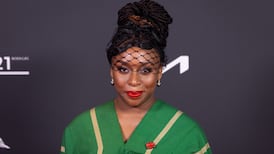It is a great credit to all involved in the world of Irish children’s books that 25 years after their inauguration their annual children’s book awards are still gaining the notice and publicity they deserve. Year after year Children’s Books Ireland have provided us with a shortlist, usually of eight or so titles, which, in the opinion of the expert judging panel, represent the best children’s reading matter to have appeared in the course of the year. It is now time for the arguments to start as we begin to exchange views as to what is in and what is out and why: it can all make for some very lively exchanges.
As anyone who has served on a literary judging panel will confirm, the process of arriving at a final decision as to “winners” and “losers” can be long and tortuous. When, as is the case here, with what are allegedly children’s books, the debate can be even more furious if only because so many different notions of the phrase “children’s book” have to be simultaneously kept in mind. In the current eight books shortlisted, for example, judges have to contend with two excellent teenage novels while at the same time keeping an eye on three of the most delightful picture books of recent times. And this is only to include notice of the titles the judges have chosen for their short list. What of the several excellent children’s/young adult books which, for whatever reason, have missed the listing? (It is here, of course, that matters of subjective judgement come into play. I was, for example, disappointed not to find at least one of Sheena Wilkinson’s excellent novels on the list).
The awards are so organised that the selected prize winners fall into certain predetermined categories, a methodology which, depending on one’s point of view, either simplifies or complicates the judging process. Choosing between the two picture books on the list – Oliver Jeffers’s The Day the Crayons Came Home, text by Drew Daywalt (HarperCollins) and Eoin Colfer’s Imaginary Fred, illustrated by Oliver Jeffers (HarperCollins) will, once again, cause many a judging headache! Both are touching, cleverly constructed combinations of the visual and the verbal, though my vote – if I had one! – would ultimately go to the Colfer. I also like to think a place might be found for Ná Gabh Ar Scoil! By Máire Zepf & Tarsila Krüse (Fata Fata), detailing a child’s first day at school.

Mary Webb’s retelling of part of Gulliver’s Travels (O’Brien Press) is a welcome addition to the shortlist, earning our special attention because of its colourful dramatic and dynamic illustrations by Lauren O’Neill: again, a worthy addition to our shortlist, though “judging” it besides some of the other titles may prove difficult. Something similar might be said of what is undoubtedly the most unusual book to appear for some time on a CBI shortlist: Irelandopedia by John & Fatti Burke (Gill & Macmillan), a rambling encyclopaedic tour of Ireland, bountifully illustrated, one of the most entertaining reference books we have had or some time – but where it will fit in with other titles on the CBI shortlist is anyone’s guess!
It would be difficult to imagine four full-length young people’s novels more different in their aspirations and achievement than the four which have made it through to the year’s shortlist. My own particular favourite, a novel I consider exquisitely written and positively bursting with ideas and inventiveness, is Patricia Forde’s The Wordsmith (Little Island Books). To call it “thought-provoking” is to misuse, once again, a much misused term. It is demanding in the claims it will make of its young readers and is thoroughly original in concept and execution. Equally original in its composition, Sarah Crossan’s One (Bloomsbury) tells the story of conjoined twins and the “real” world which they have to learn to negotiate after the relatively sheltered existence of their early childhood.
The work of John Boyne needs very little introduction to young Irish readers and few will be disappointed with The Boy at the Top of the Mountain (Doubleday), though not all may find the narrative sufficiently gripping to hold and maintain their interest until the end. It will certainly raise interesting questions about youthful idealism and heroism. And, finally, Louise O’Neill’s Asking for It (Quercus), beyond argument one of the most important YA books of recent years, all the more so for being set in Ireland. No thoughtful young person is likely to emerge unmoved by its frankness and its willingness to confront the world in which its young readers actually live.
The winners will be announced at a ceremony to be held on May 23rd at Dublin’s Smock Alley Theatre.
Robert Dunbar is a commentator on children’s books

















